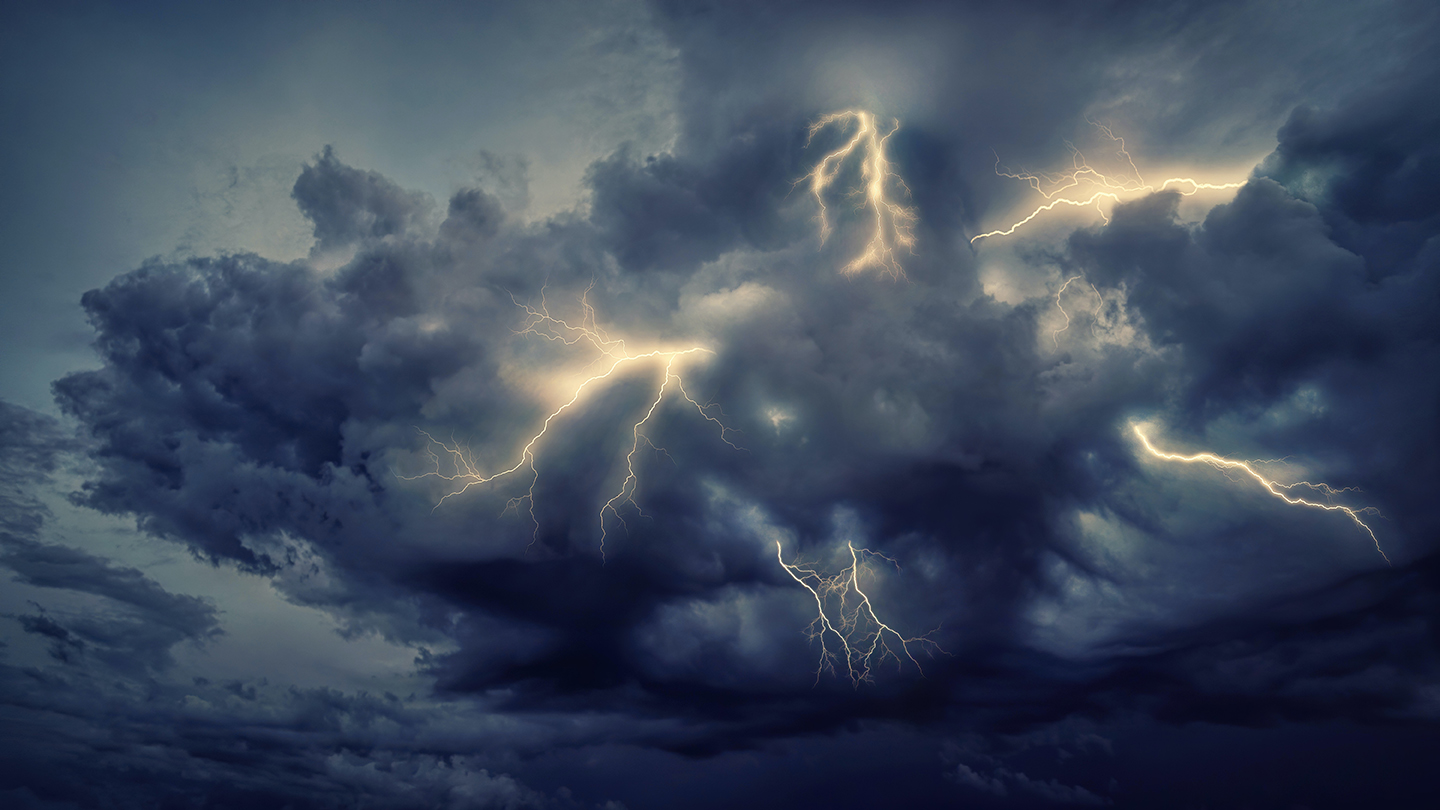Nitrogen is a key element for the origin and existence of life as we know it. As today, nitrogen in the early Earth’s atmosphere was mainly present in the form of the very stable N2 molecule and was therefore unavailable to possible forms of life. Before the development of microorganisms that can make the nitrogen available to other living beings, high-energy physical processes, such as lightning, had to break down the N2 molecules.
Lightning in the lab
To investigate how lightning can make nitrogen available to living things, researchers at the University of St Andrews in Scotland, together with colleagues from the Space Research Institute (SRI) of the Austrian Academy of Sciences and Brown University in the USA, carried out lightning experiments. The researchers filled glass flasks with water and various gas mixtures to imitate the atmosphere of today’s Earth as well as that of early Earth. They then subjected the gases to electrical discharges of almost 50,000 volts and investigated how the composition of the gas changed as a result of the lightning. Of particular interest to the researchers were the concentrations of the nitrogen molecules produced: nitrogen oxides, nitrite and nitrate.
Lightning as a nutrient supplier
“Our results show that lightning can efficiently produce nitrogen oxides in the early Earth’s CO2-rich atmosphere. These are a possible nutrient source for life on early Earth and on planets outside our solar system,” says Patrick Barth, first author of the study and PhD student at the SRI and the St Andrews Center for Exoplanet Science (StA-CES). However, the analysis of nitrogen molecules in rock samples from early Earth does not show the isotopic composition that the scientists found in their lightning experiments. This suggests that lightning was not an essential source of nitrogen for the first life forms on Earth. Instead, this result provides further evidence that microorganisms must have been responsible for providing nitrogen at least 3.8 billion years ago.
“However, there are rock samples from the Isua Greenstone Belt in Greenland whose isotopic composition can be partially explained by lightning,” says second author Eva Stüeken, a lecturer at the University of St Andrews. “This shows that lightning may have at least supported the first forms of life on Earth.” “These results could also be used to explain the origin of nitrate samples on Mars,” Barth adds.
From science to science fiction
This work inspired Emma Johanna Puranen, a doctoral student at StA-CES, to write her short story A Spark in a Flask, in which a robot oversees a facility on the moon that conducts lightning experiments. This story appeared in the science fiction collection Around Distant Suns. Christiane Helling, director of the SRI and co-founder of StA-CES, comments: “Interdisciplinary collaboration in exoplanet research, also beyond the boundaries of natural science, is important because the search for and study of life beyond Earth has ethical and philosophical implications for life on earth.”
Science and art
The Space Research Institute of the OeAW is contributing videos by scientists on the subject of atmospheres and the search for life to the exhibition in the mobile pavilion of the Steiermark Schau 2023. This includes a contribution by Patrick Barth on lightning in the atmospheres of exoplanets. His work also inspired the artist Markus Jeschaunig to create his artwork Electric Atmospheres. “One goal of the mobile pavilion, which is freely accessible to visitors, is to reflect the extraordinary peculiarities of the earth’s atmosphere in an astronomical context,” Christiane Helling summarizes.
